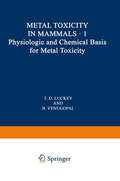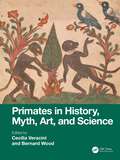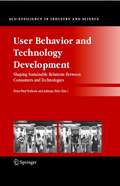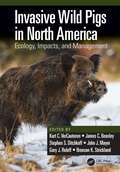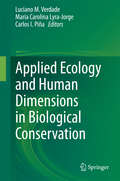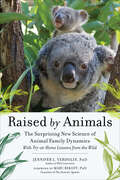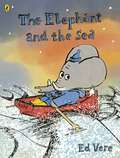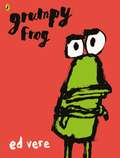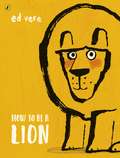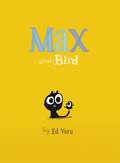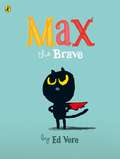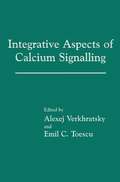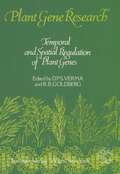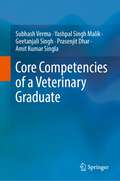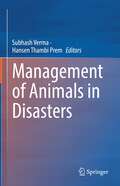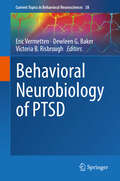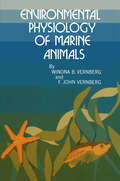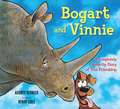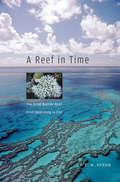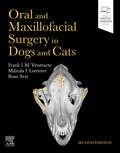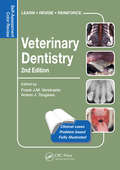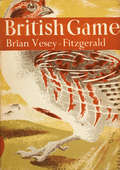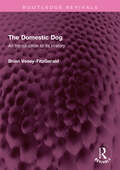- Table View
- List View
Physiologic and Chemical Basis for Metal Toxicity
by B. VenugopalOur purpose is to provide understanding for appropriate use of metals in a technical society. Knowledge of metal toxicity is needed for the preven tion, prediction, diagnosis, and therapy of adverse reactions from excess metals in mammals. Metal Toxicity in Mammals is presented in two volumes. Volume 1, Physiologic and Chemical Basis for Metal Toxic ity, provides the basis for understanding the toxic actions of metals recorded in Volume 2, Chemical Toxicity of Metals and Metalloids. The details and bases for many concepts summarized in Volume I are given, with appropriate references, in Volume 2. Thus, references for specific items in Volume 2 are not generally given in Volume 1. The authors reviewed the known toxicity of several heavy metals in anticipation of their use as multinutrient markers for NASA. As more and more metals were considered, the need for a complete review became obvious. This treatise supplants onerous searches of metal-toxicity litera ture up to 1975 and reviews the toxicity of all the metals of the periodic table on the basis of available relevant data. Books on pharmacological, nutritional, medical, veterinary, or industrial toxicity contain information about selected metals. More complete data about metals of public concern, such as mercury, lead, and cadmium, may be found in numerous books and reviews. The reader should refer to general texts and basic reference works, when specific references are not given, for general information.
Primates in History, Myth, Art, and Science
by Cecilia Veracini Bernard WoodNon-human primates (hereafter just primates) play a special role in human societies, especially in regions where modern humans and primates co-exist. Primates feature in myths and legends and in traditional indigenous knowledge. Explorers observed them in the wild and brought them, at great cost, to Europe. There they were valued as pets and for display, their images featured in art and architecture, and where they were literally teased apart by scientists. The international team of contributors to this book draws these different perspectives together to show how primates helped humans better understand their own place in nature. The book will be of interest to undergraduate and graduate students as well scholars in disciplines ranging from anthropology to art history.Key features: Includes contributions from an international team of historians and natural scientists Integrates various perspectives and perceptions of non-human primates across time and place Summarizes the place of non-human primates in science, art and culture Includes rare early illustrations
Primates in History, Myth, Art, and Science
by Cecilia Veracini Bernard WoodNon-human primates (hereafter just primates) play a special role in human societies, especially in regions where modern humans and primates co-exist. Primates feature in myths and legends and in traditional indigenous knowledge. Explorers observed them in the wild and brought them, at great cost, to Europe. There they were valued as pets and for display, their images featured in art and architecture, and where they were literally teased apart by scientists. The international team of contributors to this book draws these different perspectives together to show how primates helped humans better understand their own place in nature. The book will be of interest to undergraduate and graduate students as well scholars in disciplines ranging from anthropology to art history.Key features: Includes contributions from an international team of historians and natural scientists Integrates various perspectives and perceptions of non-human primates across time and place Summarizes the place of non-human primates in science, art and culture Includes rare early illustrations
User Behavior and Technology Development: Shaping Sustainable Relations Between Consumers and Technologies (Eco-Efficiency in Industry and Science #20)
by Peter-Paul Verbeek Adriaan SlobEnvironmental policy has long been determined by a dichotomy between technology and behavior. This book explores the relationships between technology and behavior from an interdisciplinary perspective. It is the first volume that aims to create a conceptual basis for analyzing interactions between technology and behavior, and to provide insights that are relevant to technology design and environmental policy.
Invasive Wild Pigs in North America: Ecology, Impacts, and Management
by Kurt VerCauteren James Beasley Stephen S. Ditchkoff John J. Mayer Gary J. Roloff Bronson K. StricklandThroughout North America, non-native wild pigs have become an ecologically and economically destructive invasive species. Though they are regarded as a popular game species by some, provide economic benefits to others, and are even engrained into societal heritage in some areas, wild pigs are responsible for an extraordinary amount of damage in both natural and anthropogenic systems throughout North America. As the density and range of wild pig habitat have substantially increased over the last several decades, the magnitude and diversity of their negative impacts are not yet fully realized or quantified. With various conflicts continually emerging, wild pig management is difficult and expensive to achieve. As a result, wild pigs represent one of the greatest wildlife management challenges North America faces in the 21st century. Invasive Wild Pigs in North America: Ecology, Impacts, and Management addresses all aspects of wild pig biology, ecology, damage, and management in a single comprehensive volume. It assimilates and organizes information on the most destructive introduced vertebrate species in the United States, establishing a foundation from which managers, researchers, policy makers, and other stakeholders can build upon into the future. The book provides comprehensive coverage of wild pig biology and ecology, techniques for management and research, and regional chapters. It is an asset to readers interested in wild pigs, the resources they impact, and how to mitigate those impacts, and establishes a vision of the future of wild pigs in North America. Features: Compiles valuable knowledge for a broad audience including wild pig managers, researchers, adversaries, and enthusiasts from across North America Addresses taxonomy, morphology, genetics, physiology, spatial ecology, population dynamics, diseases and parasites, and the naturalized niche of wild pigs Includes chapters on damage to resources, management, research methods, human dimensions and education, and policy and legislation Contains full color images and case studies of interesting and informative situations being created by wild pigs throughout North America Includes a chapter on wild pigs at the wildland–urban interface, a more recent and especially challenging issue
Invasive Wild Pigs in North America: Ecology, Impacts, and Management
by Kurt C. VerCauteren James C. Beasley Stephen S. Ditchkoff John J. Mayer Gary J. Roloff Bronson K. StricklandThroughout North America, non-native wild pigs have become an ecologically and economically destructive invasive species. Though they are regarded as a popular game species by some, provide economic benefits to others, and are even engrained into societal heritage in some areas, wild pigs are responsible for an extraordinary amount of damage in both natural and anthropogenic systems throughout North America. As the density and range of wild pig habitat have substantially increased over the last several decades, the magnitude and diversity of their negative impacts are not yet fully realized or quantified. With various conflicts continually emerging, wild pig management is difficult and expensive to achieve. As a result, wild pigs represent one of the greatest wildlife management challenges North America faces in the 21st century. Invasive Wild Pigs in North America: Ecology, Impacts, and Management addresses all aspects of wild pig biology, ecology, damage, and management in a single comprehensive volume. It assimilates and organizes information on the most destructive introduced vertebrate species in the United States, establishing a foundation from which managers, researchers, policy makers, and other stakeholders can build upon into the future. The book provides comprehensive coverage of wild pig biology and ecology, techniques for management and research, and regional chapters. It is an asset to readers interested in wild pigs, the resources they impact, and how to mitigate those impacts, and establishes a vision of the future of wild pigs in North America. Features: Compiles valuable knowledge for a broad audience including wild pig managers, researchers, adversaries, and enthusiasts from across North America Addresses taxonomy, morphology, genetics, physiology, spatial ecology, population dynamics, diseases and parasites, and the naturalized niche of wild pigs Includes chapters on damage to resources, management, research methods, human dimensions and education, and policy and legislation Contains full color images and case studies of interesting and informative situations being created by wild pigs throughout North America Includes a chapter on wild pigs at the wildland–urban interface, a more recent and especially challenging issue
Applied Ecology and Human Dimensions in Biological Conservation
by Luciano M. Verdade Maria Carolina Lyra-Jorge Carlos I. PiñaThis book provides both the conceptual basis and technological tools that are necessary to identify and solve problems related to biodiversity governance. The authors discuss intriguing evolutionary questions, which involve the sometimes surprising adaptive capacity of certain organisms to dwell in altered and/or changing environments that apparently lost most of their structure and functionality. Space and time heterogeneities are considered in order to understand the patterns of distribution and abundance of species and the various processes that mold them. The book also discusses at which level—from genes to the landscape, including individuals, populations, communities, and ecosystems—men should intervene in nature in order to prevent the loss of biodiversity.
Raised by Animals: The Surprising New Science of Animal Family Dynamics
by Jennifer L. Verdolin PhDWhen it comes to family matters, do humans know best? Leading animal behaviorist Dr. Jennifer Verdolin argues otherwise in this eye-opening book. Welcome to the wild world of raising a family in the animal kingdom . . . sometimes shocking, often ingenious! Every species can surprise us: Chimps have a knack for minimizing temper tantrums, and owl chicks have a remarkable gift for sharing. A prairie vole knows exactly when his stressed-out partner needs a massage. And anyone who considers reptiles &“cold-blooded&” should consider the caecilian, a snakelike animal from Kenya: After laying eggs, the mother grows a fatty layer of skin, which her babies eat after hatching (not one of the book&’s many lessons from the wild to be tried at home!). Along the way Verdolin challenges our often counterproductive beliefs about what families ought to be like and how we should feel. By finding common ground with our furry, feathered, and even slimy cousins, we can gain new insight on what &“natural&” parenting really means—and perhaps do a better job of forgiving ourselves for those days when we&’re &“only human&”!
The Elephant and the Sea
by Ed VereOne growing elephant. One smallish lifeboat. One BIG dream . . .From the award-winning author-illustrator Ed Vere comes a lyrical tale celebrating bravery and quiet determination.In a village by the sea, carved into the rockiest edge of land, where the waves are wild and tumbling lives an old elephant. Once he was a young elephant – with a dream of joining the lifeboat crew. But elephants don’t fit in lifeboats.Gabriel is determined, and he is ingenious, and he is brave. So much so that one stormy day he might be the only one who can save the day.
Grumpy Frog
by Ed VereGrumpy Frog is not grumpy. He loves green, and he loves to hop, and he loves winning. But what happens when Grumpy Frog doesn't win, or encounters - horror of horrors - a Pink Rabbit?Join Grumpy Frog as he learns about compromise and tolerance, friendship and the power of saying sorry. A hilarious book with a twist in the tail about getting - and getting rid of - the grumps from New York Times best-selling author, Ed Vere.
How to be a Lion
by Ed VereYou don't have to ROAR to be heard...Meet Leonard - a lion like no other. Leonard's best friend is Marianne, a duck. But lions chomp ducks, don't they? What will the pair do when their way of life is threatened?From the New York Times-bestselling author of Max the Brave comes a powerful story celebrating daydreamers, individuality and the quiet courage to be yourself."Positive role models showing boys how to be a whole person are few and far between these days. This marvelous book triumphs in that essential job." Kirkus"Children will feel empowered after reading such a deliberate story of unyielding strength and self-awareness. Thoughtful and provocative words to live by." School Library Journal"gently reminiscent of Winnie the Pooh" BookTrust"Framed by a glowing palette of burnt yellows and oranges, and infused with humour and warmth, this thought provoking fable celebrates courage, individuality and the power of words." The Bookseller"A philosophical tale so, so full of heart, celebrating the quietest and gentlest among us." Library Mice"A gentle read with an overwhelming power. How to be a Lion by Ed Vere italicises the need to speak up for yourself and those less strong than yourself. With his signature bold artwork this is another crowd pleaser from the author and illustrator " Picture Books Blogger
Max and Bird (Max #3)
by Ed VereMeet Max - the mighty kitten and New York Times bestseller.When Max meets Bird, Max thinks he'd like to be friends with Bird. He would also like to chase Bird and maybe eat him as a tasty snack.But that's not what friendship is all about . . . Is it?
Max the Brave (Max #1)
by Ed VereMax the Brave is a brilliant new picture book from Ed Vere.This is Max. Max the Brave, Max the Fearless, Max the Mouse-catcher...But, in order to be a Mouse-catcher, Max needs to know what a mouse is, so off he goes to find out. This hilarious new picture book from the phenomenally-talented Ed Vere introduces a new and lovable character, with Ed's trademark bold illustrations and clever story.Other Ed Vere titles to look out for:Banana; Bedtime for Monsters; Mr. BigEd Vere studied fine art at Camberwell College of Art and has been writing and illustrating children's books since 1999. He is published in both England and the US. Ed is also a painter, working from his studio in east London and is represented by galleries in London and Los Angeles. After a year and a half living in Barcelona, Ed now lives and works in London.
Integrative Aspects of Calcium Signalling
by Alexej Verkhratsky Emil C. ToescuHere is the first effort in a single volume to cover all of the integrative functions of calcium signalling - how changes in intracellular calcium coordinate a variety of coherent cellular responses. Written by a team of internationally established researchers, Integrative Aspects of Calcium Signalling provides the latest experimental data and concepts, bringing together a detailed analysis of the events, processes, and functions regulated by calcium signalling. A unique resource for professionals and students of physiology, biophysics, neurobiology, biochemistry, and all related fields.
Temporal and Spatial Regulation of Plant Genes (Plant Gene Research)
by Desh Pal S. Verma Robert B. GoldbergFirst attempts to isolate plant genes were for those genes that are abun dantly expressed in a particular plant organ at a specific stage of devel opment. However, many important gene products are produced in a very minute quantity and in specialized cell types. Such genes can now be isolated using a variety of approaches, some of which are described in this volume. The rapid progress during the last decade in regeneration of a number of crop plants and the availability of molecular tools to introduce foreign genes in plants is allowing the engineering of specific traits of agri cultural importance. These genes must, however, be regulated in a spatial and temporal manner in order to have desired effects on plant devel opment and productivity. The habitat of plants necessitate adaptive responses with respect to the environmental changes. Starting from germination of the seed, the plant begins to sense environmental cues such as moisture, light, temperature and the presence of pathogens, and begins to respond to them. Little is known about various signal transduction pathways that lead to biochemical and morphogenetic responses, in particular, transition from vegetative to reproductive phase. With the availability of tools to generate specific mutations via transposon tagging, identification and isolation of genes affecting these processes may be facilitated. Transfer of these genes into heterologous environments will allow understanding of the complex processes that control plant development.
Core Competencies of a Veterinary Graduate
by Subhash Verma Yashpal Singh Malik Geetanjali Singh Prasenjit Dhar Amit Kumar SinglaThis book is an essential guide for veterinarians, veterinary faculty and policymakers for understanding the core competencies of a fresh veterinarian. The book briefly covers competencies in preclinical, paraclinical, and clinical subjects including anatomy, physiology, biochemistry, veterinary jurisprudence, animal management & welfare including nutrition and breeding, infectious and non-infectious diseases, disease epidemiology, diagnosis, and treatment, prevention, control and zoonoses, surgical and other clinical interventions. The book further includes other competencies, including biologicals, anti-mortem, and post-mortem inspection, certifications, applied one health aspects, review and analysis of scientific evidence, international trade and regulations, and organization of veterinary services. It also highlights the importance of effective communication, interpersonal skills, record keeping and management of a small veterinary hospital, health informatics, etc. The book breakdowns the must-have competencies of a global veterinarian into different topics and subtopics for easy comprehension and further learning. It enables the professional standard-setting & regulatory bodies and academicians in improved curricula designing and implementation and more importantly tries to bring uniformity in day one veterinary graduates’ competencies globally, enhancing the movement and employability of veterinarians across the world.
Management of Animals in Disasters
by Subhash Verma Hansen Thambi PremThis book is a comprehensive guide for veterinary and humanitarian professionals to plan emergency responses for the care and welfare of animals. It covers various topics on disasters, such as principles of disaster management, operation planning, team deployment, etc., from the perspective of saving both livestock and the livelihood of vulnerable communities. The book also discusses the importance of early warning systems, biosecurity, techniques for data collection, one health approach, climate change, and appropriate mitigation strategies. It highlights different principles, approaches, and guidelines related to the rescue, relief, and management of animals during disasters. It also contains topics on the welfare of birds and the rescue and relief of wild animals. This book includes essential veterinary and life-saving supplies required by the relief providing teams during emergencies such as disasters. The book helps administrators understand the key aspects of welfare and management of animals during disasters and enable them to draft policies focusing on humans and animals’ rescue & welfare and protection of livelihoods. It is an essential guide for veterinarians, humanitarian workers, field functionaries, farmers, disaster response forces personnel, etc., during various types of disasters and emergencies.
Behavioral Neurobiology of PTSD (Current Topics in Behavioral Neurosciences #38)
by Eric Vermetten Dewleen G. Baker Victoria B. RisbroughThis volume focuses on the behavioral neuroscience that supports our understanding of the neurobiology of trauma risk and response. The collection of articles focuses on both preclinical and clinical reviews of (1) state-of-the-art knowledge of mechanisms of posttraumatic stress disorder (PTSD) and co-occurring disorders, (2) the biological and psychological constructs that support risk and resiliency for trauma disorders, and (3), novel treatment strategies and therapeutics on the horizon.
Environmental Physiology of Marine Animals
by W. B. Vernberg F. J. VernbergWithin recent years man has become increasingly aware of the disastrous environmental changes that he has introduced, and therefore society is now more concerned about understanding the adaptations organisms have evolved in order to survive and flourish in their environment. Because much of the information pertaining to this subject is scattered in various journals or special symposia proceedings, our purpose in writing this book is to bring together in a college-and graduate-student text the principal concepts of the environmental physiology of the animals that inhabit one of the major realms of the earth, the sea. Our book is not meant to be a definitive treatise on the physiological adap tation of the animals that inhabit the marine environment. Instead, we have tried to highlight some of the physiological mechanisms through which these animals have been able to meet the challenges of their environment. We have not written this book for anyone particular scientific discipline; rather, we hope that it will have an interdisciplinary appeal. It is meant to be both a reference text and a text for teaching senior undergraduate and graduate courses in marine biology, physiological ecology of marine animals, and envi ronmental physiology of marine animals.
Bogart and Vinnie: A Completely Made-Up Story of True Friendship
by Audrey VernickWhen Vinnie, a crazy-happy dog, gets lost while visiting a nature preserve with his family, he finds comfort in the company of Bogart, a big, lazy rhinoceros. Vinnie loves his new friend, but Bogart would rather just take a nap. A friendship soon blossoms-even if Vinnie's definition of "friendship" is very different from Bogart's-and when word of their unique situation spreads, Bogart and Vinnie are a worldwide sensation! But as soon as their fifteen seconds of fame ends, what's left is a bond even Bogart can't ignore. Pairing picture-book veteran, Henry Cole, with up-and-coming author, Audrey Vernick, this clever spoof of the unendingly popular interspecies animal-friendship story is full of heart and humor.
A Reef in Time: The Great Barrier Reef from Beginning to End
by J.E.N. VeronLike many coral specialists fifteen years ago, J.E.N. Veron thought Australia’s Great Barrier Reef was impervious to climate change. “Owned by a prosperous country and accorded the protection it deserves, it would surely not go the way of the Amazon rain forest or the parklands of Africa, but would endure forever. That is what I thought once, but I think it no longer.” This book is Veron’s Silent Spring for the world’s coral reefs. Veron presents the geological history of the reef, the biology of coral reef ecosystems, and a primer on what we know about climate change. He concludes that the Great Barrier Reef and, indeed, most coral reefs will be dead from mass bleaching and irreversible acidification within the coming century unless greenhouse gas emissions are curbed. If we don’t have the political will to confront the plight of the world’s reefs, he argues, current processes already in motion will become unstoppable, bringing on a mass extinction the world has not seen for 65 million years. Our species has cracked its own genetic code and sent representatives of its kind to the moon—we can certainly save the world’s reefs if we want to. But to achieve this goal, we must devote scientific expertise and political muscle to the development of green technologies that will dramatically reduce greenhouse emissions and reverse acidification of the oceans.
Oral and Maxillofacial Surgery in Dogs and Cats - E-Book
by Frank J Verstraete Milinda J Lommer Boaz ArziLearn to master a highly specialized form of animal surgery. Oral and Maxillofacial Surgery in Dogs and Cats, 2nd Edition offers a unique, detailed, comprehensive and highly illustrated account of surgical procedures that will improve outcomes for all surgical and dental specialists. The second edition of this text is a collaborative effort from both human and veterinary oral surgeons – each considered an expert in their field. With in-depth clinical photos, and illustrations, this indispensable resource is perfect for both general practitioners and students alike.An authoritative collaboration between human and animal surgeons includes over 30 international contributors whorepresent the peak of professional expertise in the field.UNIQUE! Only book on the market devoted to a surgical specialty of growing relevance provides you with a look at a highly specialized practice. High-quality illustrations combined with step-by-step textual guidance give you a clear understanding of the material.In-depth descriptions of surgical conditions provide you with detailed explanations of surgical procedures. NEW! Expert Consult site provides you with digital access to the full textbook. NEW! Additional chapters on the latest discoveries and techniques cover Diagnostic imaging in oral and maxillofacial surgery, Piezosurgery, Temporomandibular ankyloses and pseudoankylosis, and Regenerative techniques in maxillofacial surgery.
Veterinary Dentistry: Self-Assessment Color Review, Second Edition (Veterinary Self-assessment Color Review Ser.)
by Frank Verstraete Anson J. TsugawaThis new edition in the established and well-respected series Veterinary Self-Assessment Color Reviews covers all aspects of veterinary dentistry. Each case consists of one or more questions, illustrated by stimulating visual material including imaging and color clinical photographs. The 228 cases appear in random order, just as they would in pract
British Game (Collins New Naturalist Library #2)
by Brian Vesey-FitzgeraldBritish Game ranges beyond the strict legal interpretation of game and is full of interesting details about the birds and beasts that should interest sportsmen. This edition is exclusive to newnaturalists.com
The Domestic Dog: An Introduction to its History (Routledge Revivals)
by Brian Vesey-FitzGeraldFirst published in 1957, The Domestic Dog is the introduction to the history of man’s best friend, with special reference to Great Britain. After discussing the natural history of the Canidae and the possible sources of domestication, Mr. Vesey-FitzGerald surveys the career of the domestic dog from its beginnings in pre-historic times through to its present position as household companion and pet. He pays particular attention to the early literature of the dog and, even more particularly, to representations of the dog by the great artists of the world, since he believes that much of the history of the individual breeds can be traced in this way. He discusses the part played by the dog in war, in sport, and in the day-to-day occupations of man. He traces the development of breeding for Show and the growth of the Dog Show from the local rivalry of a few enthusiasts to a vast and complicated business, and considers the effect of breeding for Show on the dog as an animal. Finally, he discusses the most controversial subject, the classification of the domestic dog, and gives brief histories and descriptions of the various breeds. This book will be of interest to students of history, veterinary science as well as to anyone with a love for dogs.
